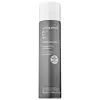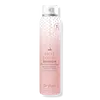What's inside
What's inside
 Key Ingredients
Key Ingredients

No key ingredients
 Benefits
Benefits

 Concerns
Concerns

 Ingredients Side-by-side
Ingredients Side-by-side

Alcohol Denat.
AntimicrobialHydrofluorocarbon 152a
Water
Skin ConditioningIsododecane
EmollientC13-15 Alkane
SolventDicaprylyl Ether
EmollientSunflower Seed Oil Glycerides
EmollientPolyquaternium-16
Dioleoylethyl Hydroxyethylmonium Methosulfate
Propylene Glycol Dibenzoate
Skin ConditioningIsohexadecane
EmollientTriheptanoin
Skin ConditioningPPG-5-Ceteth-20
EmulsifyingC13-16 Isoalkane
SolventPEG-40 Hydrogenated Castor Oil
EmulsifyingParfum
MaskingAminomethyl Propanol
BufferingLinalool
PerfumingCoumarin
PerfumingCitronellol
PerfumingGeraniol
PerfumingCitral
PerfumingLimonene
PerfumingAlcohol Denat., Hydrofluorocarbon 152a, Water, Isododecane, C13-15 Alkane, Dicaprylyl Ether, Sunflower Seed Oil Glycerides, Polyquaternium-16, Dioleoylethyl Hydroxyethylmonium Methosulfate, Propylene Glycol Dibenzoate, Isohexadecane, Triheptanoin, PPG-5-Ceteth-20, C13-16 Isoalkane, PEG-40 Hydrogenated Castor Oil, Parfum, Aminomethyl Propanol, Linalool, Coumarin, Citronellol, Geraniol, Citral, Limonene
Hydrofluorocarbon 152a
Alcohol Denat.
AntimicrobialDisiloxane
Skin ConditioningPropylene Glycol Dibenzoate
Skin ConditioningPPG-3 Benzyl Ether Myristate
EmollientSpathodea Campanulata Flower Extract
Skin ConditioningSclerocarya Birrea Seed Oil
HumectantHydrolyzed Rice Protein
Skin ConditioningGlycerin
HumectantOctylacrylamide/Acrylates/Butylaminoethyl Methacrylate Copolymer
Parfum
MaskingPPG-12 Dimethicone
Skin ConditioningWater
Skin ConditioningButylene Glycol
HumectantPolyquaternium-59
UV AbsorberPotassium Sorbate
PreservativeAminomethyl Propanol
BufferingPentaerythrityl Tetra-Di-T-Butyl Hydroxyhydrocinnamate
AntioxidantSorbic Acid
PreservativeBenzyl Alcohol
PerfumingSodium Benzoate
MaskingCoumarin
PerfumingHydrofluorocarbon 152a, Alcohol Denat., Disiloxane, Propylene Glycol Dibenzoate, PPG-3 Benzyl Ether Myristate, Spathodea Campanulata Flower Extract, Sclerocarya Birrea Seed Oil, Hydrolyzed Rice Protein, Glycerin, Octylacrylamide/Acrylates/Butylaminoethyl Methacrylate Copolymer, Parfum, PPG-12 Dimethicone, Water, Butylene Glycol, Polyquaternium-59, Potassium Sorbate, Aminomethyl Propanol, Pentaerythrityl Tetra-Di-T-Butyl Hydroxyhydrocinnamate, Sorbic Acid, Benzyl Alcohol, Sodium Benzoate, Coumarin
Ingredients Explained
These ingredients are found in both products.
Ingredients higher up in an ingredient list are typically present in a larger amount.
Alcohol Denat. is an alcohol with a denaturant property. It is created by mixing ethanol with other additives.
This ingredient gets a bad rep because it is irritating and drying - mostly due to its astringent property. Astringents draw out natural oils in tissue, constricting pores and leaving your skin dried out.
However, alcohol denat. is not all that bad.
Due to its low molecular weight, alcohol denat. tends to evaporate quickly. One study on pig skin found half of applied alcohol evaporated in 10 seconds and less than 3% stayed on skin.
This also helps other ingredients become better absorbed upon application.
Studies are conflicted about whether this ingredient causes skin dehydration. One study from 2005 found adding emollients to propanol-based sanitizer decreased skin dryness and irritation. Another study found irritation only occurs if your skin is already damaged.
Small amounts of alcohol are generally tolerated by oily skin or people who live in humid environments.
The rule of thumb is if this alcohol is near the end of an ingredients list, it will probably not affect your skin much.
Also...
This ingredient has antimicrobial and solvent properties.
The antimicrobial property helps preserve products and increase their shelf life. As a solvent, it helps dissolve other ingredients.
Other types of astringent alcohols include:
Learn more about Alcohol Denat.Aminomethyl Propanol is used to adjust the pH of products. It is also used as a base to create other organic compounds. Having a balanced pH is important for protecting your skin.
Aminomethyl propanol is safe to use in cosmetics up to 1%. It is soluble in water.
Coumarins are a group of substances found naturally in plants. There are over 1300 types of coumarins identified. It has a natural vanilla scent.
Coumarin is an identified EU known allergy, meaning it may cause an allergic reaction when applied to the skin.
In many countries, coumarin is banned as a food additive. However, it can be found in soaps, tobacco products, and some alcohol drinks.
Plants use coumarins as a chemical defense. Some plants that have coumarins include lavender, tonka beans, and yellow clovers.
Learn more about CoumarinWe don't have a description for Hydrofluorocarbon 152a yet.
Parfum is a catch-all term for an ingredient or more that is used to give a scent to products.
Also called "fragrance", this ingredient can be a blend of hundreds of chemicals or plant oils. This means every product with "fragrance" or "parfum" in the ingredients list is a different mixture.
For instance, Habanolide is a proprietary trade name for a specific aroma chemical. When used as a fragrance ingredient in cosmetics, most aroma chemicals fall under the broad labeling category of “FRAGRANCE” or “PARFUM” according to EU and US regulations.
The term 'parfum' or 'fragrance' is not regulated in many countries. In many cases, it is up to the brand to define this term.
For instance, many brands choose to label themselves as "fragrance-free" because they are not using synthetic fragrances. However, their products may still contain ingredients such as essential oils that are considered a fragrance by INCI standards.
One example is Calendula flower extract. Calendula is an essential oil that still imparts a scent or 'fragrance'.
Depending on the blend, the ingredients in the mixture can cause allergies and sensitivities on the skin. Some ingredients that are known EU allergens include linalool and citronellol.
Parfum can also be used to mask or cover an unpleasant scent.
The bottom line is: not all fragrances/parfum/ingredients are created equally. If you are worried about fragrances, we recommend taking a closer look at an ingredient. And of course, we always recommend speaking with a professional.
Learn more about ParfumWe don't have a description for Propylene Glycol Dibenzoate yet.
Water. It's the most common cosmetic ingredient of all. You'll usually see it at the top of ingredient lists, meaning that it makes up the largest part of the product.
So why is it so popular? Water most often acts as a solvent - this means that it helps dissolve other ingredients into the formulation.
You'll also recognize water as that liquid we all need to stay alive. If you see this, drink a glass of water. Stay hydrated!
Learn more about Water